Rethinking the Way a Hitter’s Brain Works: An EEG Case Study
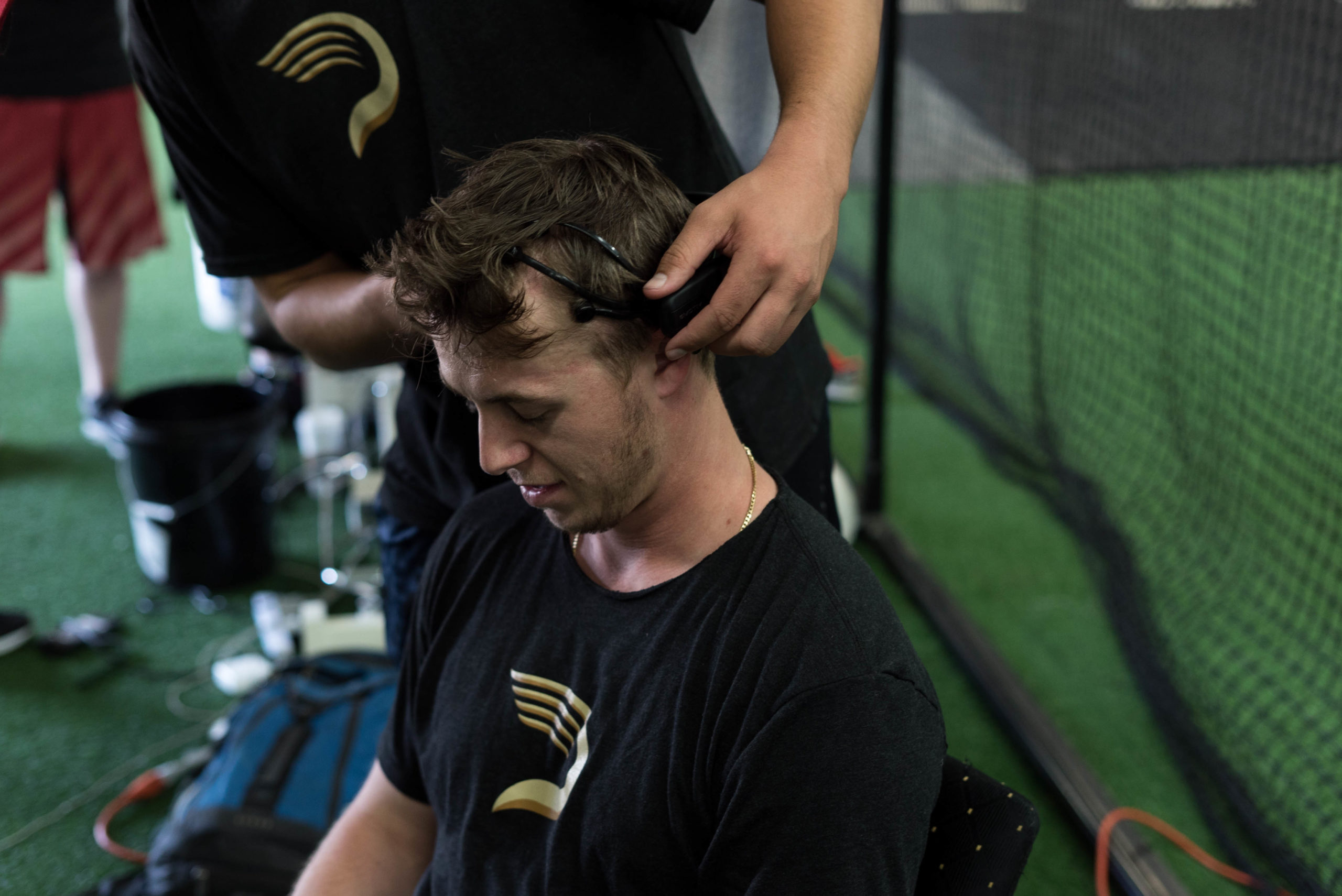
Subtitle: Efficient Brain Activity with Practice and Enhanced Perception-Action Coupling
What’s Going on in a Hitter’s Brain?
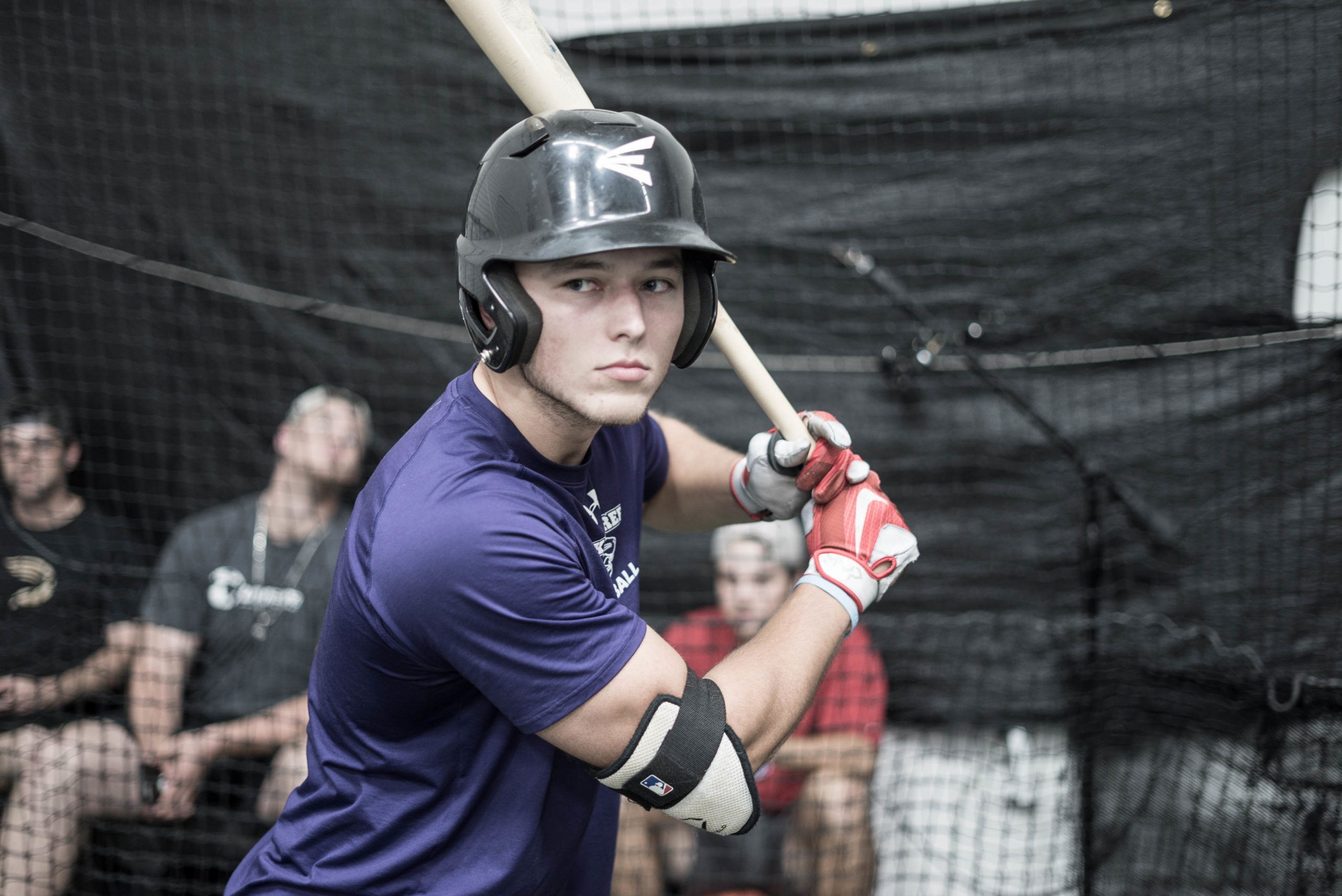
When it comes to the brain and hitting, we don’t really know much about what’s actually going on. If we’re able to understand the way a hitters brain works in a live situation, we can improve the way we train them. It could potentially even help pitchers in the way that they attack hitters. People have speculated as to how a hitters brain processes information while standing in the box, but how accurate are these claims? Much of pitch recognition and vision training for hitters is based around the idea that a hitter sees the pitch, assesses information about the pitch as it comes in, and then makes a deliberate decision as to whether or not to swing.
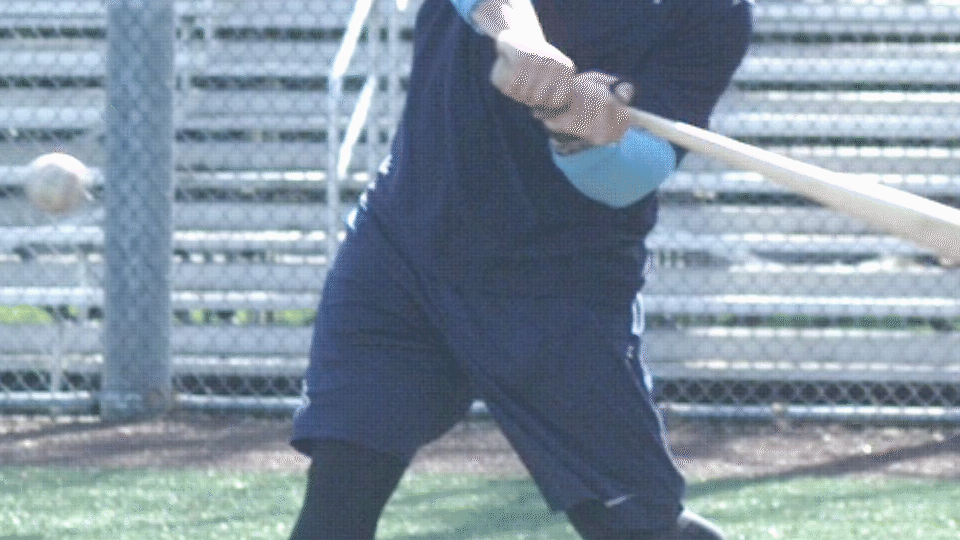
Become the Hitter You Want to Be
Train at Driveline
This process of information assessment and decision making calculation would have to happen at an absurdly fast rate, less than half a second. Until recently, researchers had not actually measured brain activity to validate this theory of hitting and pitch recognition. But, as wearable electroencephalogram (EEG) technology has improved, performance related studies have begun to investigate what the brain is actually doing in situations like this.
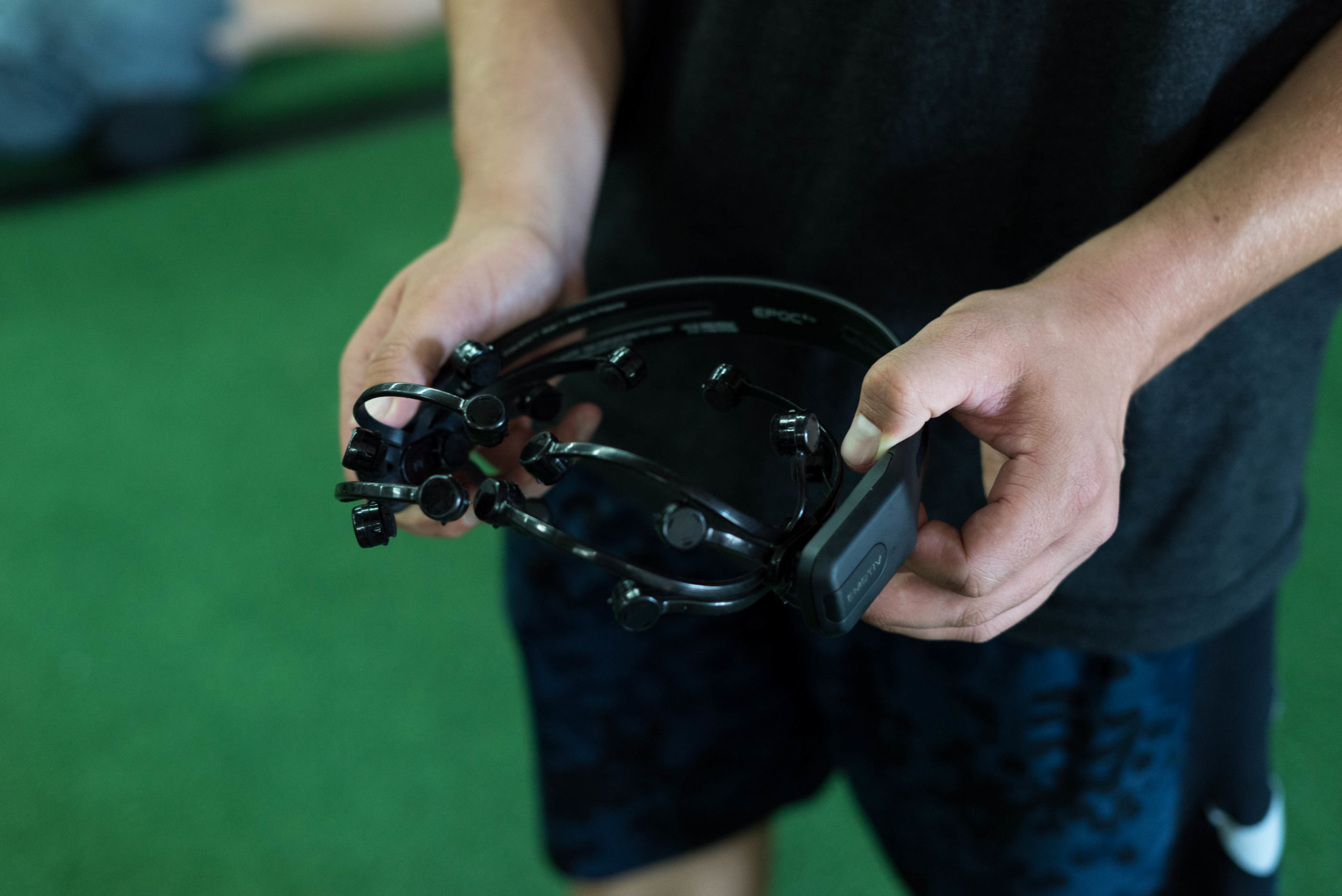
What is EEG?
Previous research has estimated that the human brain contains up to 100-billion neurons (Herulano-Houzel, 2009). These neurons have thousands of connections to other neurons in order to communicate and synchronize thoughts and activities. While individual neuron activity is far too small to detect, during many activities large numbers of neurons fire simultaneously. These large neuron firings can be detected as brain waves and can be measured on the surface of the head through an EEG. While an EEG signal is very similar to that of an electromyogram (EMG), which is used to measure the electrical activity of muscles, there are some distinct differences. The strength of electrical muscle activity is measured by the amplitude of an EMG signal; it is the summation of action potentials across muscle fibers.
The electrical signals that an EMG and EEG record can be differentiated by the frequency of each signal. The EMG, or muscle wave signal, is generally between 80-3000 Hz. For example, in our EMG studies at Driveline, we sample at 1000 Hz. Brain activity on the other hand is measured between a frequency of 0.5 Hz and 30 Hz. This activity is often differentiated into four-significant brainwave frequency bands: Delta, Theta, Alpha, and Beta. (Emotiv, Deuschl & Eisen, 1999):
- Delta (0.5-4 Hz): Samples in this frequency range are associated with restfulness and deep sleep.
- Theta (4-8 Hz): Samples taken in this range indicate meditative states and sometimes drowsiness.
- Alpha (8-15 Hz): Samples in this range are related to a relaxed alertness and sometimes meditative states as well.
- Beta (15-30 Hz): These waves indicate alertness, mental engagement, and conscious processing. Furthermore, beta waves have been referred to as an indication of focus or attention. However, beta waves can be slightly misleading because as a task becomes well learned, the brain becomes more efficient and does not need to work as hard. Because of this, beta waves can actually be a good indication of “poor efficiency.”
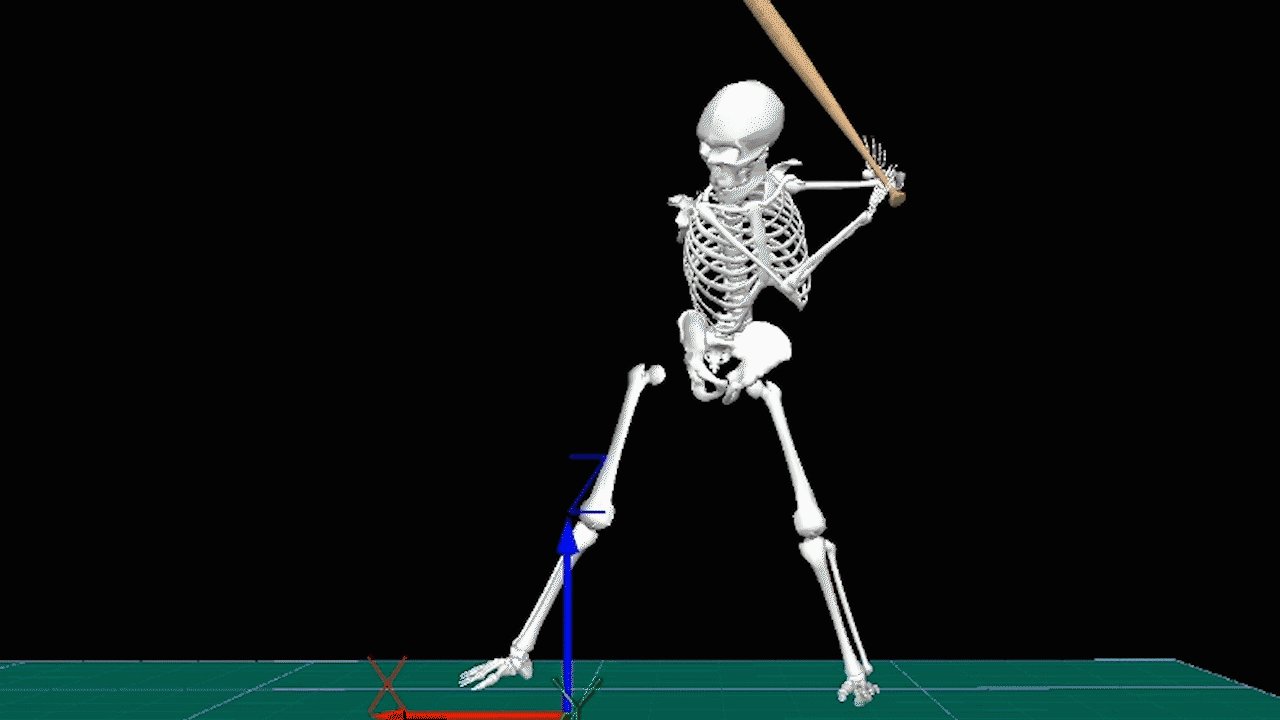
Foundations of Hitting
30 modules teaching you everything we know about hitting and hitting mechanics.
Previous Research
While many scientists study how the brain works, there is limited research within the field of neuroscience and baseball. One group of researchers has attached EEG devices to hitters and monitored their brain activity while having them watch videos of pitches on a computer screen. This same group of researchers created a Go/No-Go task in which hitters watched videos of baseball pitches being thrown and were told to click a button on the computer if the pitch was a fastball (“Go” situation) and refrain from pressing any buttons if the trajectory of the pitch appeared to be a slider or a curveball (“No-Go” situation). This study compared the EEG results of collegiate Division I baseball and non-baseball players. The main highlights included the following (Muraskin, Sherwin, & Sajda, 2015):
- “Baseball experts have stronger inhibition responses measured by single-trial EEG analysis.
- Source localization reveals stronger cortical activation in the SMA (Supplementary Motor Area) for experts during inhibition.
- Results show possible evidence for enhanced perception-action coupling in baseball players.”
So what do those results mean? Basically, experienced baseball players were found to actually have decreased activity during the Go/No-Go pitch recognition task in certain brain areas—specifically the frontal cortex, a part of the brain that is primarily in charge of deliberate decision-making. In the half a second that it takes for a pitch to travel to home plate, there is not enough time for a hitter to go through a deliberate decision-making process on whether or not to swing. Intuitively, this makes sense. Earlier, it was mentioned that increased activity in the beta-wave frequency band was an indication of inefficient brain activity. This would explain why more-experienced hitters have less frontal lobe activity and use enhanced perception-action coupling instead when it comes to pitch recognition and swing-decision making.

What Is Perception-Action Coupling?
Perception-action coupling argues that perception and action processes are functionally intertwined. Perceptions of the environment are not that you necessarily understand the sensory information; rather, you perceive in the awareness of “affordances.” Affordances are the perceivable opportunities for action in the world.
So, how can this apply to hitting and why is it important? It is believed that the brain assesses and understands the information about the pitch coming in (spin, velocity, and trajectory), makes a deliberate decision whether to proceed with the swing, and then decides upon a location to place the bat all while the pitch is on its way to the plate. While the human brain has the capability to work incredibly fast, it can’t quite work that fast. The perception-action coupling theory when applied to hitting argues that information is not necessarily “understood”; rather, it is detected (the hitter sees the baseball pitch coming in), and then affordances are perceived (your opportunities for mechanical action, swing/no-swing). The information is not really ever understood, and there is no deliberate decision to swing. Much like a computer program algorithm, the visual stimuli are perceived and a physical action output is generated based on that environmental perception.
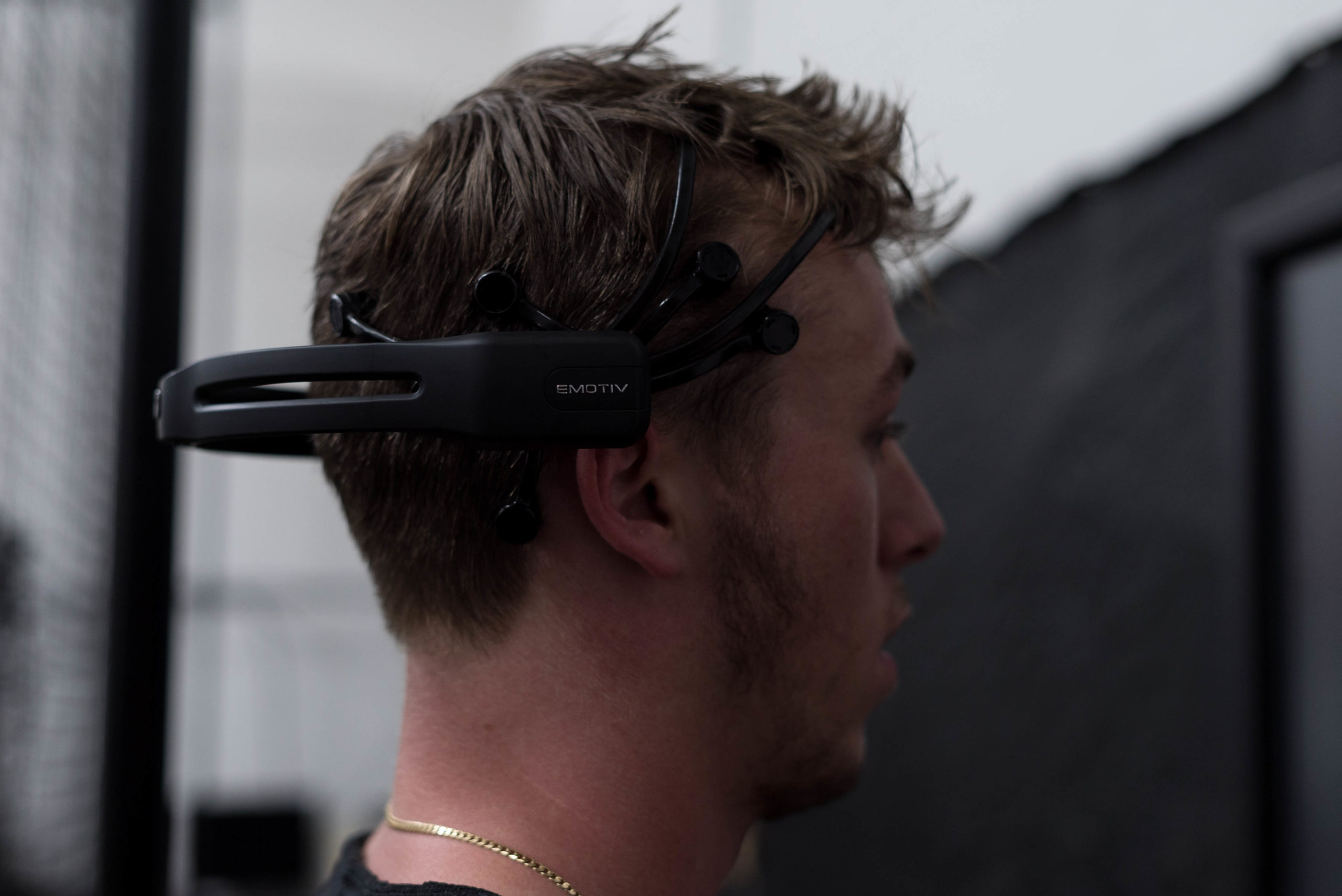
The Emotiv EPOC+ Case Study with the Senaptec Visual Trainer
In the previously mentioned study on EEG and pitch recognition, their research supported the idea that enhanced perception-action coupling is an indication of baseball expertise. At Driveline, we have our own wearable EEG device called the Emotiv EPOC+. It is a 14-channel wireless EEG headset that can provide access to high-quality EEG data in a live setting in comparison to other wired EEG headsets that can only be used in a lab. It has previously been validated with other EEG systems to provide research quality EEG data (Badcock, et al., 2015). For our first pilot study with the EPOC+, we wanted to see if we could replicate similar EEG results in a Go/No-Go task when comparing “experts” and “novices.”
For this, we used our Senaptec Sensory Station and asked participants to go through a simple Go/No-Go visual training task for 30 seconds on a difficulty setting of 3. In this task, the goal is to touch the green dots that appear on the screen in random locations as quickly as possible while avoiding touching the red dots that randomly appear. We were basically trying to recreate the previously mentioned study with our own EEG device to see if it would be viable in a live baseball setting.
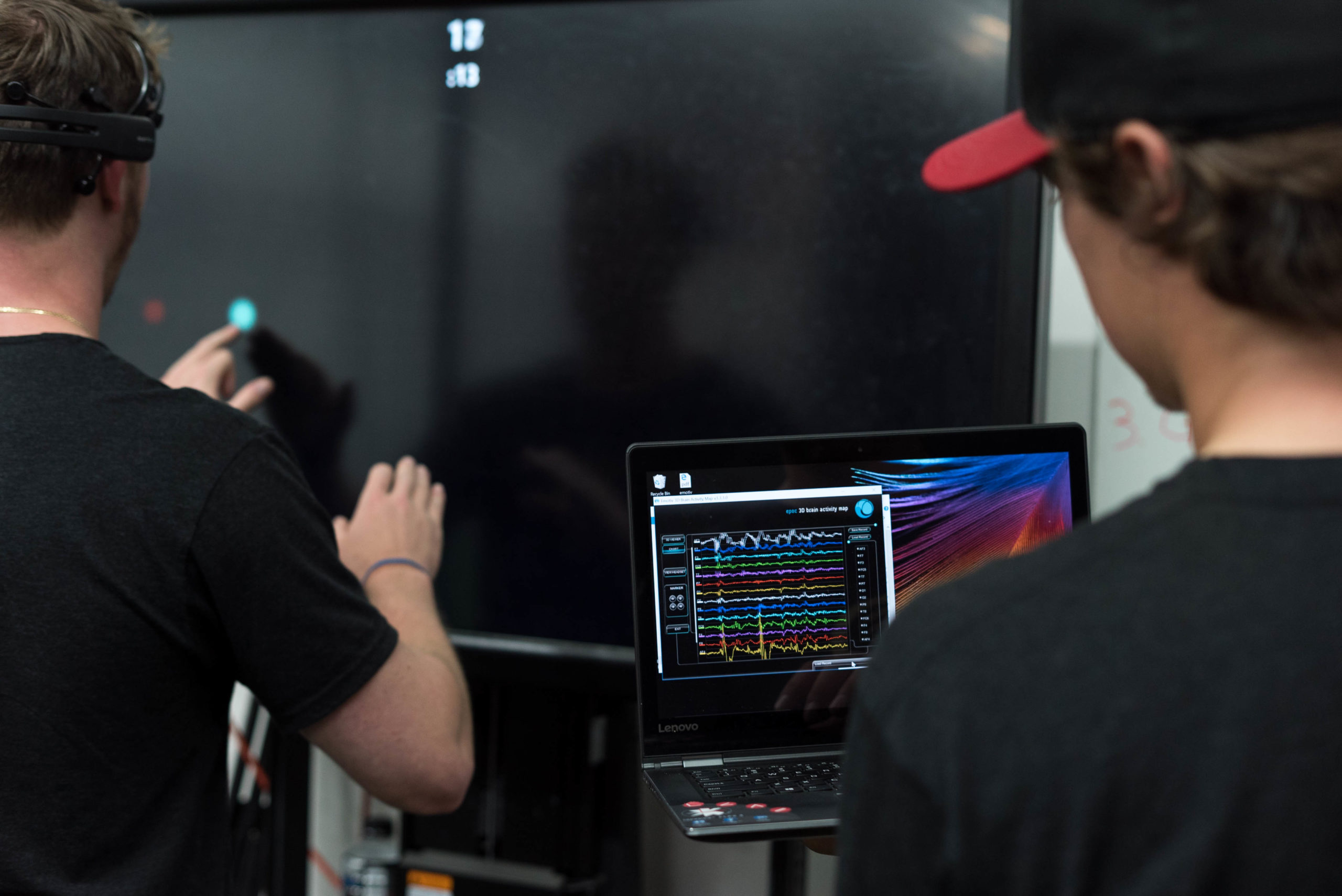
Qualitative Analysis and Findings
We tested multiple subjects and classified them as either a novice (little to no prior experience with using the Senaptec visual trainer) or expert (extensive experience with using the Senaptec visual trainer).
Decreased Beta-Wave Activity in Experts
Our main findings were that experts appeared to have less beta-wave brain activity during this Go/No-Go task in comparison with the novices. In the images below, you can see example screen captures from the beta-wave frequency activity of two subjects.
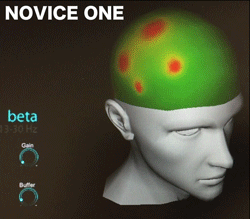
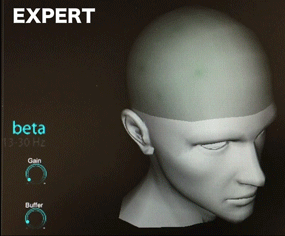
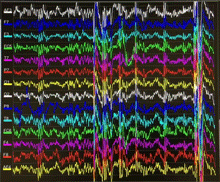
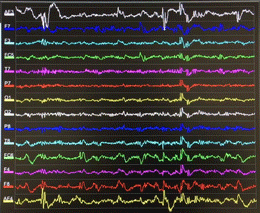
In the case of the novices, we found that throughout their initial trials, it appeared that beta-wave activity slightly diminished throughout the duration of the test, which suggests that they became more efficient as the test continued and allows us to make an argument that they were not only making less deliberate decisions during the task but also that perception-action coupling may have begun to kick in.

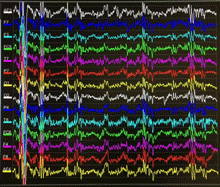
Extensive Practice Decreased Beta-Wave Activity
We asked a few subjects to actually perform the Go/No-Go task a few more times and practice at it a bit, and then we retested their brain activity once more in another trial. There appeared to be another noticeable decrease in beta-wave brain activity when comparing the first trial and this last trial in these subjects.
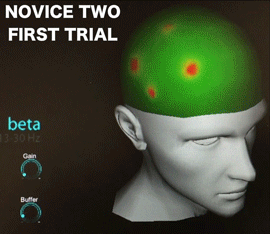
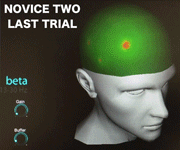
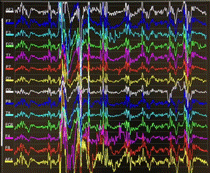
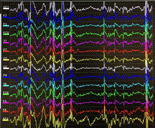
Discussion and Implications
While our first study with the Emotiv EPOC+ was qualitative in nature, we did collect data that supported findings from previous research and corresponded with the notion that Go/No-Go tasks, such as hitting or visual training games, are performed with enhanced perception-action coupling at experienced levels. However, there is a lack of information when it comes to how a hitter’s brain works when deciding whether or not to swing at certain pitches. Muraskin and Sherwin’s work on how the theory of perception-action coupling underlies hitting expertise could have a significant impact on the way that hitters are trained from a brain-activity perspective.
While further research is needed to validate this theory, if it is correct, and environmental perceptions are tied to the physical affordances of swinging a bat, it suggests that hitters can train this kind of perception-action coupling by seeing pitches in as close to as live a setting as possible. The best way to train this would be to experience live pitching as often as possible in a game-like situation. Muraskin and Sherwin have actually created a visual training software based on their research called the uHIT software, where players can train this perception-action coupling by watching pitches on a screen and pressing a button if they would swing. While this is a good alternative to seeing live pitching, further research is needed to improve on this type of training. One possible direction potentially could be the use of virtual reality to increase immersion during this kind of training.
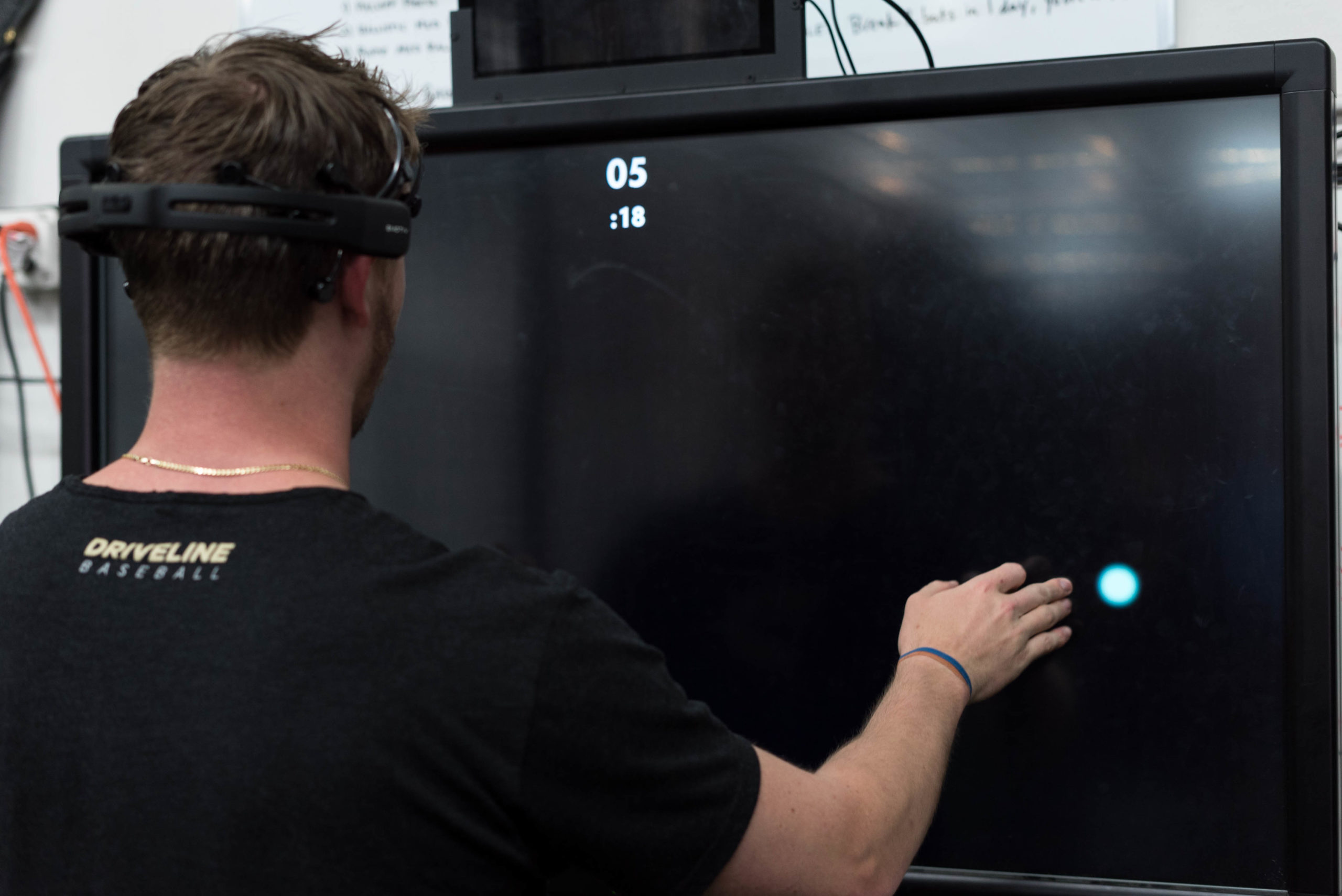
Perception-Action Coupling and Swing Kinematics Differences
With this perception-action coupling theory of hitting in mind, it is possible that different environmental perceptions are linked to different physical affordances. This means that there could potentially be different swing kinematics that occur when hitting off of a pitching machine versus actually hitting in a live situation. Earlier research has shown this with elite cricket players. Researchers found that there were significant differences “between initiation of backswing and front foot movement” when hitting off of a bowler machine and an actual live bowler (Renshaw, Oldham, Davids, & Golds, 2007). Understanding the differences that occur during these training constraints can help improve and develop better ways to train hitters with movement coupling in mind.
What About Pitchers?
Is it possible that this theory of brain activity and hitting could actually help out pitchers as well? Of course! In the research article by Renshaw on kinematic changes in cricket player’s swings, they note that further research should examine the movement kinematics of batters who face bowlers with unorthodox bowling actions. It’s possible that this idea of movement coupling could help explain why pitchers with unorthodox pitching styles (sidearm, submarine, etc.) are sometimes effective.
As of late, Major League pitchers such as Marcus Stroman, Kenley Jansen, Johnny Cueto, etc. have started to switch up their timing and mechanics to the plate when pitching in order to mess with a hitter’s timing. This movement-coupling theory could explain why this style of pitching is becoming more effective; not only would it throw off a hitter’s timing, but it could have an effect on actual swing mechanics as well. While further research needs to be directed towards validating claims like that, the use of EEG devices like our EPOC+ has the potential to do just that.
This post was written by Anthony Brady, Summer 2017 R&D Intern at Driveline Baseball. EEG analysis was Anthony’s independent project in the Driveline R&D Internship Program.
Want to learn more about what we know about hitting? Check out all the articles we’ve written on it:
Train at Driveline
Interested in training with us? Both in-gym and remote options are available.
- Athlete Questionnaire: Fill out with this link
- Email: [email protected]
- Phone: 425-523-4030
Make the best decision of your career!
Comment section
Add a Comment
You must be logged in to post a comment.
Joe Mason -
Have been able to localize which specific brain regions are involved? Such as the STS or TPJ or others?
Bill Masullo -
Thanks, Anthony for the good work and info. Off the top of my head, I know there was brain activity monitoring study of hitters a few years ago. In that study, there was a discernible activity prior to a swing (1/1000 sec.) much akin to the No/No Go task you efforted. The conclusion was as experience was gained the brain (decentralized) recognized certain patterns and acted accordingly – much like a file retrieval system. I think this is what Perry Husband has delved into with the idea of “hunting” rather than “reacting.” Narrowing the task of focus on what to look for, matching what to look for, and acting on what to look for. Good stuff.
Driveline Baseball -
This idea of hunting/searching for a certain pitch would be very interesting to look at. As technology improves, we’d like to be able to look at brain activity when it comes to pitch recognition and if there are specific differences with “looking” for a certain pitch or maybe a specific location and just reacting to it.
RRM -
Where are the references for this article? I spent several years monitoring reaction timing in the motor and somato-sensory cortices and VB thalamus in addition to EMGs. I’d like to read some of the background lit and raw and massaged data for these experiments.